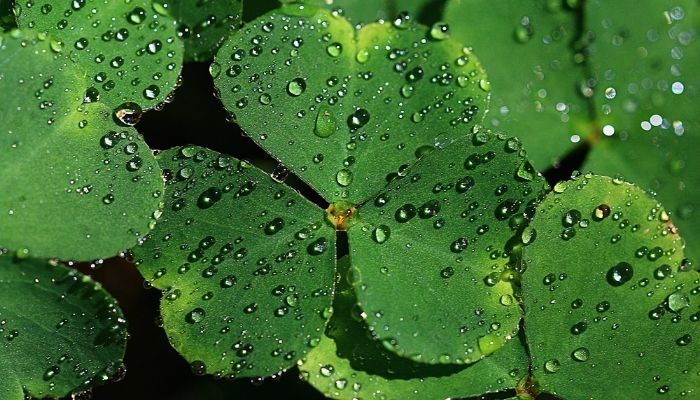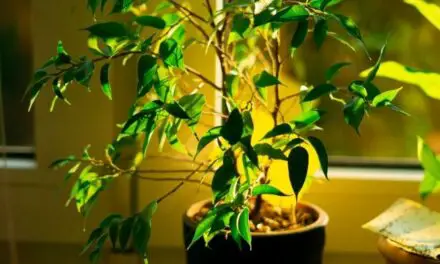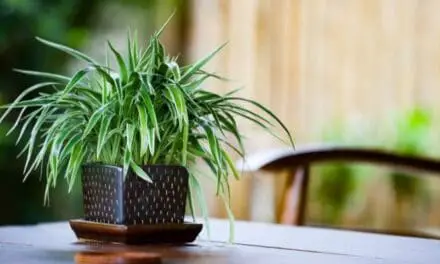Oxalis is a type of shamrock plant that produces an array of pretty flowers in a range of bright and deep blooms.
These plants are really tough and super-easy to grow, but for a couple of reasons, these plants are prone to droopiness.
And under certain conditions, your oxalis may begin to look a bit dull and lifeless – even though you’ve been looking after it the way you always used to.
Table of Contents
Why Is My Oxalis Drooping?

Your oxalis may begin drooping because it is not being watered correctly, but more often than not, oxalis begin to droop when they enter dormancy at the end of their growing season.
How Do You Revive A Drooping Oxalis?
Many types of oxalises have a pronounced period of dormancy and if this is the reason for your plant’s drooping, you have a couple of options.
In fact, many people who are not expecting this period of dormancy think that they have done something wrong and killed their oxalis.
But this isn’t the case and your plant will come back to life.
Let Your Oxalis Come Out Of Dormancy Naturally
The easiest way to revive your oxalis – if it is dropping because it has entered dormancy – is to let nature take its course.
Gradually cut back on water until all its foliage has died back.
Water minimally, let the old leaves turn brown, and allow the soil to stay fairly dry until you see the beginning of some new growth after a few weeks.
Once new growth appears, gradually increase the amount of water it’s getting until it is growing normally again.
Eventually, when the conditions are right, new shoots will grow from the ground and your oxalis will come back to life.
Force Your Oxalis To Come Out Of Dormancy
A quicker way is to cut all the drying leaves and move your oxalis to a cold dark place, but where temperatures are above freezing.
You should keep it there between three and six weeks without water.
Then you can move it back indoors to a sunny location.
You should start watering it occasionally until the new growth appears then you can gradually get back to a normal watering schedule.
Also Read: Why is My Fairy Castle Cactus Drooping?
How To Revive An Oxalis That’s Drooping Because Of Incorrect Watering
Your oxalis may also be drooping because it has been over or underwatered.
If this is the case, you’ll first need to identify whether it’s an overwatering issue or an underwatering issue.
Test The Soil.
The first thing to do is test the soil’s moisture level.
Generally, oxalis should be watered about once every two weeks and like slightly moist conditions.
Test the top 2 inches of soil with your finger to determine whether it’s too dry or too wet.
The soil should be allowed to dry between waterings, but only about the top 2 to 5cm of soil.
Test the soil and if it feels very dry below a depth of 1 inch your plant may not be getting enough water.
If this is the case you can give your oxalis some water.
If you test the soil and it feels quite moist below a depth of an inch, then you may have been overwatering your plant.
If this is the case, you’ll need to wait at least a week and let the top inch or 2 of soil fully dry out before you water it again.
If your oxalis is drooping because of water issues, making the changes and watering your plant correctly should do the job.
How To Water Your Oxalis Properly?
Oxalis, also known as false shamrock, don’t require too much watering.
Depending on the size of your pot and the amount of soil in it, just two or three times a month can be enough.
The soil in your pots should be lightly moist, but never wet or soggy.
You should allow about the top inch to dry between each watering.
Also Read: Why Is My Kalanchoe Leggy? (And How To Save It)
How To Know If You Are Overwatering Your Oxalis?
If the soil in your pots is very damp and the leaves of your oxalis are starting to droop, turn yellow and wilt, the most likely cause is that you are overwatering it
In this case, you absolutely must cut back on watering and let the soil dry properly – at least the top inch.
Oxalis don’t require much watering, two or three times a month, or every couple of weeks is just enough.
In case that your oxalis is still wilting and droopy looking even after decreasing the watering frequency and amount, it may just be entering its dormancy period.
Do Oxalis Need Sun Or Shade?
The majority of oxalis cultivars prefer a partial shade. While some prefer higher amounts of light, they still thrive in partially shaded areas.
Because they are natively wood plants, they are somewhat resistant to high amounts of light, but direct sunlight can have a negative impact on them.
Many professional growers suggest the east-facing windows as the best location for them.
This way the morning sun provides a sufficient amount of light at the proper intensity.
How Do I Make My Oxalis Bushier?
To make your oxalis bushier you’ll want to prune any dead or dying leaves or spent flower stalks. This will provide space for new growth and allow your plant to become bushier.
With a bit of proper care, oxalis can grow into beautiful flowering bushes.
Soil needs to be loose and rich in nutrients because oxalis has a great demand for feeding.
You should also feed them with liquid fertilizer for flowering plants because they require high amounts of phosphorus in their growing cycle, the best NPK formulation is 15-30-15.
Oxalis does not require frequent watering, every couple of weeks is just enough.
You should be careful to let the top of the soil in your pot dry before watering.
Why Does My Oxalis Close At Night?
Many plants close their leaves and flowers during the night, this phenomenon is called nyctinasy.
One of these nyctinastic plants is oxalis. While there is no certain explanation why this behavior has evolved in many plants, it gives several advantages for survival in the wild.
It protects flowers and young leaves from freezing, protects pollen from dew, and thus allows pollinating insects to carry it.
Probably the most interesting hypothesis about it is that by closing their leaves, plants are allowing owls, bats, and other nighttime hunters to easier hunt the nocturnal insects that could eat their leaves and flowers.
Oxalis closing its leaves during the night is perfectly normal behavior for your plant.
Why Is My Oxalis Drooping After Repotting?
Your oxalis is drooping after repotting because it is suffering from shock. This can happen if it has been re-potted just before its blooming season or if the soil used for repotting is not very similar to the old soil it was used to.
Generally, oxalis doesn’t need frequent repotting, and it can be done every few years.
But when you do it, it can happen that it starts drooping and looking rough.
This can happen for several reasons.
Most often the cause is improperly timed repotting.
Just before the blooming season, oxalis is particularly vulnerable to repotting shock, so you should avoid doing this in the spring.
Another reason for the shock from transplanting can be the composition of new soil.
All plants are sensitive to a sudden change in the soil, and the soil in new pots must closely match the composition of the old ones.
Final Thoughts
Oxalis are hardy plants and very easy to grow but they are more susceptible to drooping because of their periods of dormancy.
If you give these plants a little TLC and allow them their periods of rest, they will present you with beautiful pink, white and lavender-colored blooms all through spring, fall, and winter.




